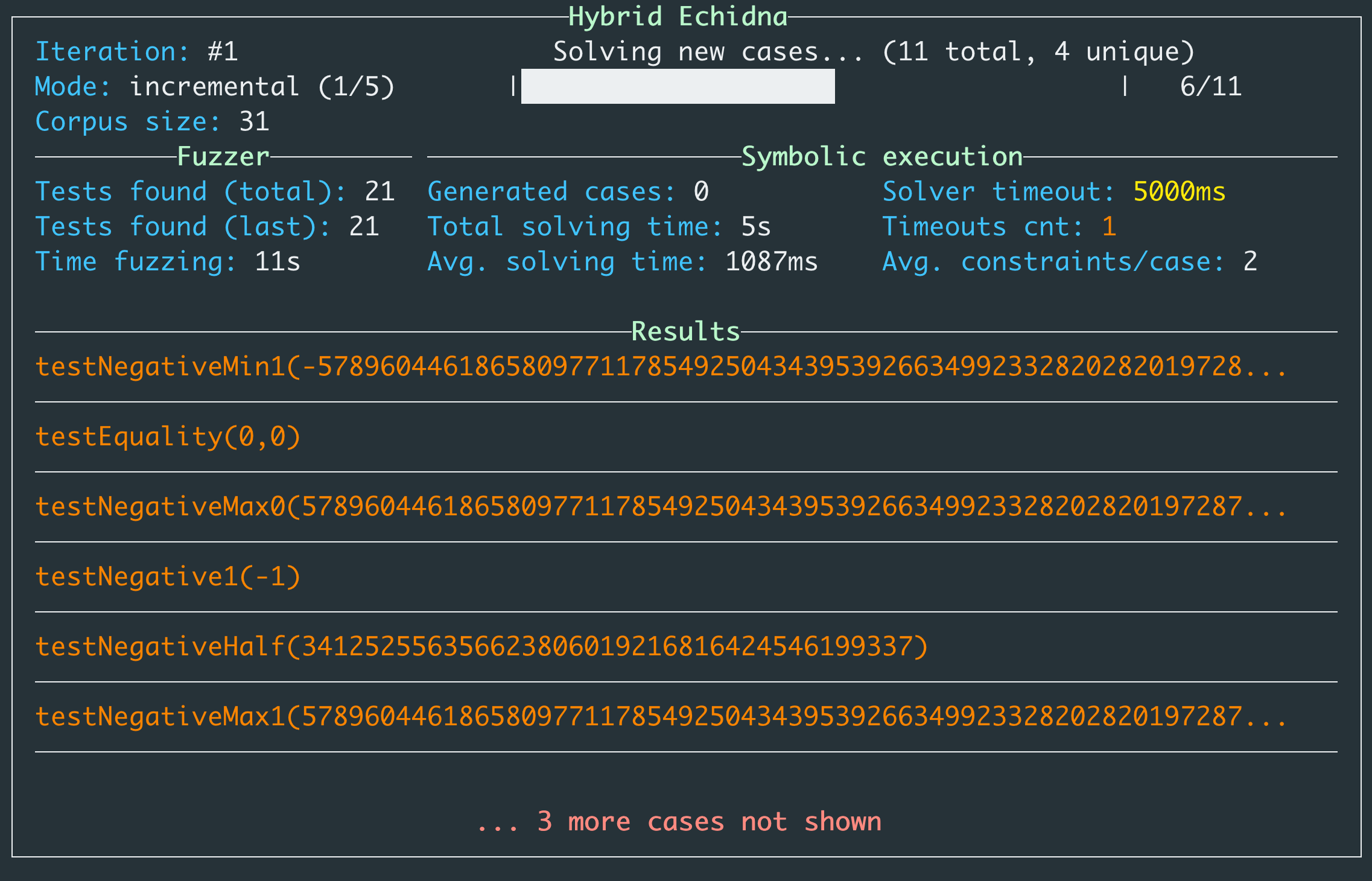Optik is a set of symbolic execution tools that assist smart contract fuzzers, letting them run in a hybrid mode. Optik couples Echidna, our smart contract fuzzer, with the Maat symbolic executor that replays the fuzzing corpus and extends it with new inputs that increase coverage.
Optik is a work in progress and should not be used for real audits yet. Current limitations include:
- Symbolic
KECCAKhashes are not supported CREATE2,CALLCODE, andDELEGATECALLare not yet supported- Gas is not taken into account
- Some echidna options are not yet supported (see
hybrid-echidna -h)
Optik allows to run the Echidna smart-contract fuzzer in hybrid mode. It basically couples Echidna with the Maat symbolic executor that replays the Echidna corpus and extends it with new inputs that increase coverage.
hybrid-echidna starts with several incremental seeding steps, where it seeds the corpus with short transactions sequences obtained by Slither's dataflow analysis, and uses symbolic execution more intensely to solve new inputs. The sequence length is incremented at each seeding step. Once it reaches a certain length threshold, hybrid-echidna falls back into its normal mode, starts to limit the number of symbolic inputs to solve, and stops using dataflow analysis for seeding the corpus.
Hybrid echidna can be used seamlessly in place of regular Echidna by replacing echidna-test with hybrid-echidna in your Echidna command line.
For example:
hybrid-echidna MyContract.sol --test-mode assertion --corpus-dir /tmp/test --contract MyContract
Additionnal options are available in hybrid mode to control hybrid-echidna's behaviour:
-
--max-iters: maximum number of fuzzing iterations to perform (one iteration is one Echidna campaign + one symbolic executor run on the corpus) -
--solver-timeout: maximum time in milliseconds to spend solving each possible new input -
--incremental-threshold: number of initial incremental seeding steps to perform -
--no-incremental: skip initial incremental seeding -
--cov-mode: type of coverage to increase when solving new inputs. Most coverage modes are implemented for experimental purposes. Unless you are developing/hacking on Optik, we recommend to keep the default mode
Debugging, logging and terminal display:
-
--debug: add debugging information to the log output -
--logs: write logs to a given file (orstdout) -
--no-display: disable the graphical terminal display
For a quick installation, run:
python3 -m pip install optik-toolsTo keep up with the latest features and fixes, install Optik from its master branch:
git clone https://github.com/crytic/optik && cd optik
python3 -m pip install .You can also run it from Docker:
git clone https://github.com/crytic/optik && cd optik
docker build -t crytic/optik .
docker run -it --rm --mount type=bind,source="$(pwd)",target=/workdir crytic/optik
# This runs the Docker container, mounting the local directory into /workdir